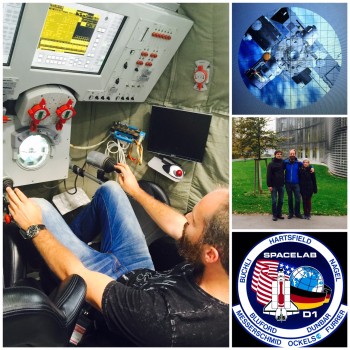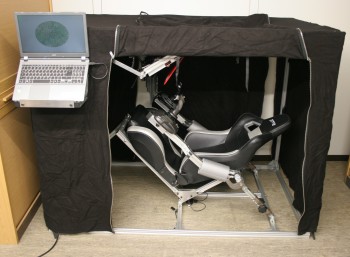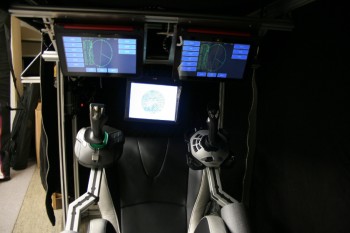ESA-sponsored medical doctor in Antarctica Floris van den Berg recounts on his blog the training on one of the more exciting experiments — spaceflight training…
On November 6th, 1985, Wubbo Ockels safely landed with the Challenger Space Shuttle at Edwards Air Force Base in California. He spent over a week in space with seven other astronauts, and preformed over 60 experiments, mostly related to microgravity. One of his crewmembers for the mission was the German astronaut Ernst Messerschmid.
Almost 30 years later, I meet Prof. Ernst Messerschmid at the Institute for Space Travel Systems at the University of Stuttgart, Germany. Though retired as an astronaut, he still dedicates his life to science — space science to be exact! Messerschmid is the head researcher of the SIMSKILL project. The SIMSKILL experiment will study the piloting skill maintenance during an overwinter stay in an isolated versus non-isolated environment, and looks at the effect of in-flight simulator training to counteract potential degradation.
When we go to Mars for the first time (or any other planet), astronauts will have to spend quite some time in space. The concern is that in an isolated, small spaceship, with low oxygen levels, motor skills might deteriorate faster than on Earth. In Concordia we will train the crew to dock a Soyuz rocket to the International Space Station by using a Soyuz flight simulator. One group will get regular training and the other group limited training to see what the optimal training schedule is for complicated space procedures.
Since I’m not an astronaut yet, I had no idea how to fly a spaceship and especially not how to teach other people to fly one, so some training was needed to get ‘flight ready’! I already have my vehicle driver’s license, and I thought it shouldn’t be that hard… Right?
In my mind and possibly limited by my expectations of having gravity, I did not expect anything besides the ‘normal’ backwards/forwards and left/right. So I was definitely surprised to realize that there were 8 more directions to master! Since gravity is no longer a limitation, the left joystick has 6 directions. Up/down movements are easy, the rest was more challenging. The right joystick is for the rotational movements. It allows for rotating around the length clockwise/counterclockwise, but also around the other 2 axes, easiest said: wiggling up/down and left/right.
To make things a bit more complicated, 400 km above Earth, moving 7700 m/s, the International Space Station can make all the same movements. At this speed, a roundtrip of Earth takes just 90 minutes, so daylight comes and goes all the time. Fair to say, it took me a while to learn how to properly manoeuvre the spaceship but my first successful docking to the International Space Station only made my space dreams stronger. Space, here I come!
Astronaut I met: Prof. Dr. Dr-Ing. e.h. Ernst Messerschmid
Head researchers I met: Andreas Fink, Emilie Dessy & Valerie Schröder
Official research title: Use of a spaceflight simulator for investigations on piloting skill maintenance in long term confinement under isolation (SIMSKILL)








Discussion: 3 comments
This teaches me nothing about how to drive a space craft how about you get someone that knows how.
Dear Mr mouth, you can read about how to fly a spacecraft in this blog written by ESA astronaut Samantha Cristoforetti. She knows how, as she is qualified and has done it and written about it: https://outpost42.esa.int/?s=soyuz&submit=
Hi,
as a space sim enthusiast, this is really exciting! Can you tell more about the joysticks? What direction do they control, and how? I think I understood that right hand does roll/pitch and yaw? What does left hand do? You wrote 8 more direction and I have trouble figuring out which are those 🙂
In space sim 6dof (degrees of freedom), we have pitch/yaw/roll, and up-down, left-right, forward-backward.
Thanks!